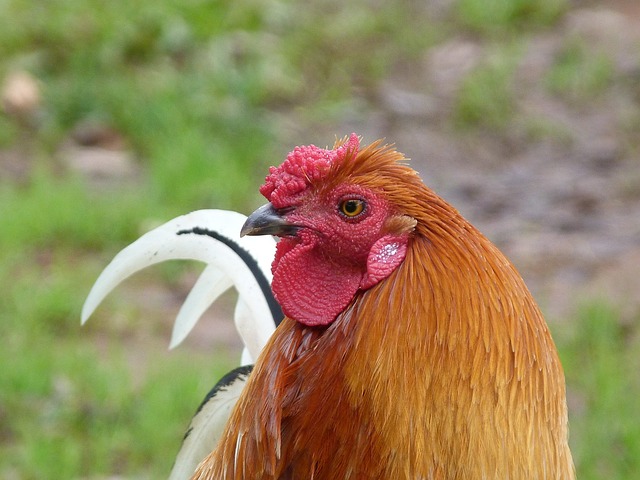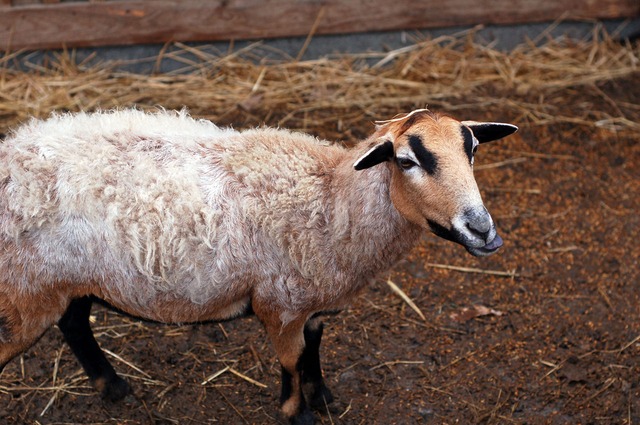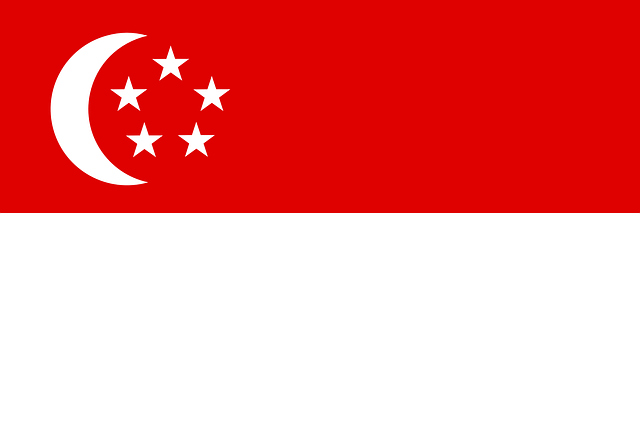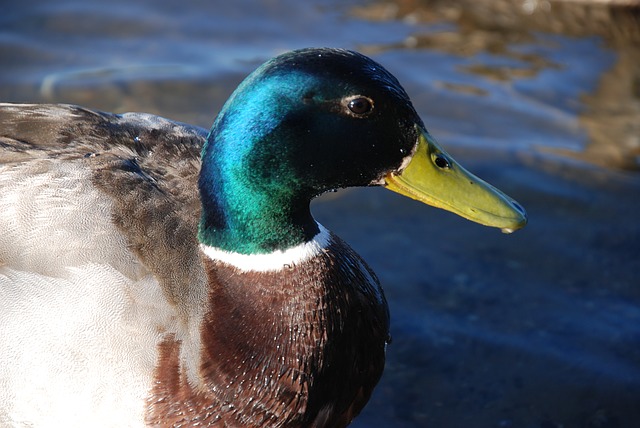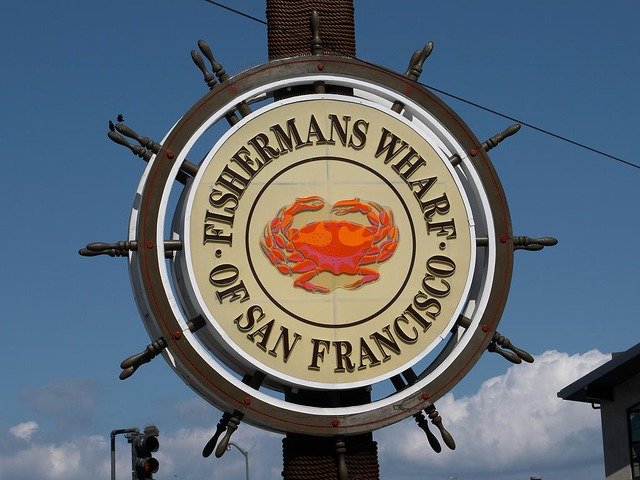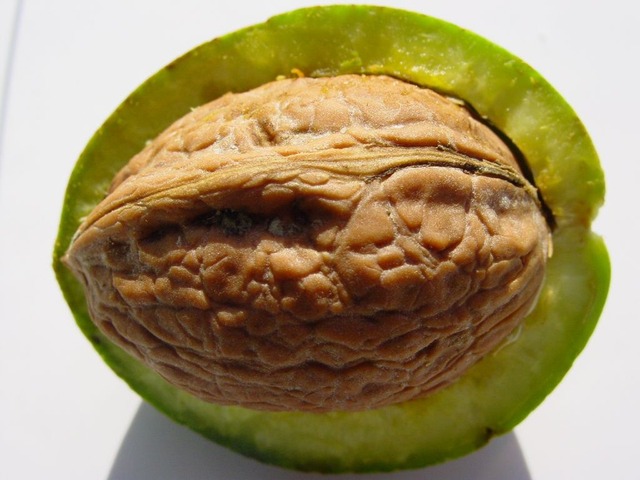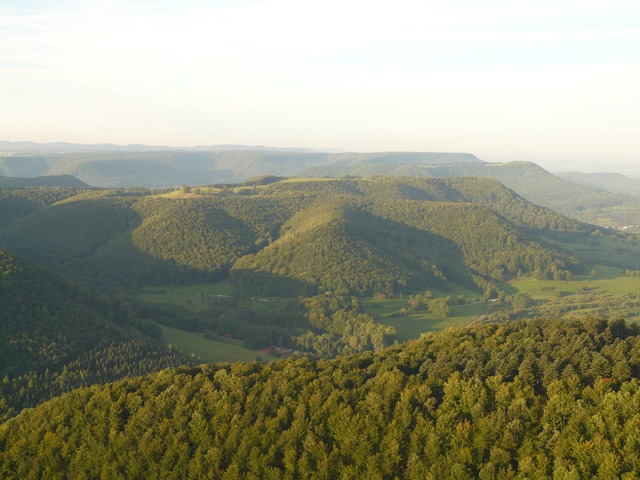لاكسا
{
| الوجبة | Lunch |
|---|---|
| المنشأ | Maritime Southeast Asia |
| المنطقة أوالدولة | Southeast Asia |
| مرتبط بالمطعم الوطني | Indonesia, Malaysia, Singapore |
| المكون الرئيسي | Laksa noodles or rice vermicelli, coconut milk, curry soup base |
| الأنواع | Laksa, Asam laksa, Curry laksa, Nyonya laksa, Laksa lemak |
Food energy (per serving) |
700 kcal (2931 kJ) |
| |
| لاكسا | |||||||
|---|---|---|---|---|---|---|---|
| بالصينية | 叻沙 | ||||||
| |||||||
| الاسم الصيني البديل | |||||||
| الصينية | 喇沙 | ||||||
| |||||||
Laksa is a spicy noodle soup popular in the Peranakan cuisine of Southeast Asia. Laksa consists of thick wheat noodles or rice vermicelli with chicken, prawn or fish, served in spicy soup based on either rich and spicy curry coconut milk or on sour asam (tamarind or gelugur). Laksa is found in Indonesia,Malaysia, Singapore, and Southern Thailand.
Origin
The name comes from the Hokkien luak sua, (پخ-اوه-جي: la̍k-sá, 辣沙)[] meaning "spicy sand", which refers to the taste and texture of ground dried prawns. However some etymologists believe the word laksa comes from an ancient Persian word for "noodles".
There are various theories about the origins of laksa. One theory connected laksa to the 15th century Ming Chinese naval expeditions led by Zheng He, whose armada navigated Maritime Southeast Asia.Overseas Chinese migrants had settled in various parts of Maritime Southeast Asia, long before Zheng He's expedition. However, it was after this that the number of Chinese migrants and traders significantly increased. These Chinese men intermarried into the local populations, and together they formed mixed-race communities called the Peranakans or Straits Chinese.
In Malaysia, the dish is believed to have been introduced by Chinese immigrants in Malacca.
In Singapore, the dish (or its local "Katong" version) is believed to have been created after interaction between the Peranakans with the local Singaporeans..
In Indonesia, the dish is believed to have been born from the Chinese coastal settlements and the mixing of cultures between Chinese merchants and the local cooking practices. Historians believe laksa is a dish that was born from actual intermarriage. In early coastal pecinan (Chinese settlement) in maritime Southeast Asia, it was only Chinese men that ventured abroad out from China to trade. When settling down in the new town, these Chinese traders and sailors set out to find local wives, and these women began incorporating local spices and coconut milk into Chinese noodle soup served to their husbands. This creates the hybrid Chinese-local (Malay or Javanese) culture called Peranakan culture. As Peranakan Chinese communities have blended their ancestors' culture with local culture, Peranakan communities in different places now demonstrate diversity according to the local flavour.
Because laksa has different varieties across the region, it is difficult to pinpoint the exact origin of the dish. Nevertheless, numbers of laksa recipes has been developed along the trade channels of Southeast Asia—where the ports of Penang, Medan, Malacca, Singapore, Palembang, and Batavia (now Jakarta) are the major stops along the historic spice route. The intensive trade links among these port cities enables exchanges of ideas to take place, including sharing recipes.
Popularity
Various recipes of laksas have gained popularity in Malaysia, Singapore, and Indonesia; and subsequently international recognition. Initially in July 2011, CNN Travel ranked Penang Asam Laksa 7th out of the 50 most delicious foods in the world. Its rank however, fell to number 26th after CNN held an online poll by 35,000 people, published in September 2011. Singaporean Curry Laksa on the other hand ranked in number 44th.
In Indonesia, laksa is one of the traditional comfort foods; the spicy warm noodle soup is much appreciated during cold rainy days. However, its popularity is somewhat overshadowed by soto, a similar hearty warm soup dish, which is often consumed with rice instead of noodles. In modern households, it is common practice to mix and match the recipes of laksas; if traditional laksa noodle is not available, Japanese udon noodles might be used instead.
Laksa is a popular dish in Darwin, Australia, and the first Darwin International Laksa Festival is scheduled to be held in November 2019.
Types
The type of laksa is based upon the soup base employed in its recipe; either rich and savoury coconut milk, fresh and sour asam (tamarind, gelugur or kokum), or the combination of the two. There are three basic types of laksa: curry laksa, asam laksa, and other variant that can be identified as either curry or asam laksa. Curry laksa is a coconut milk curry soup with noodles, while asam laksa is a sour, most often tamarind-based, soup with noodles. Thick rice noodles also known as laksa noodles are most commonly used, although thin rice vermicelli (bee hoon or mee hoon) are also common, and some recipes might create their own rice noodle from scratch. Some variants might use other types of noodles; Johor laksa for example uses spaghetti, while a fusion recipe might use Japanese udon noodle.
Curry laksa
Curry Laksa is a coconut-based curry soup. The main ingredients for most versions of curry laksa include bean curd puffs, fish sticks, shrimp, and cockles. Some vendors may sell chicken laksa. Laksa is commonly served with a spoonful of sambal chilli paste and garnished with Vietnamese coriander, or laksa leaf, which is known in Malay as daun kesum.
This is usually known as curry mee in Penang rather than curry laksa, due to the different kind of noodles used (yellow mee or bee hoon, as opposed to the thick white laksa noodles). Curry mee in Penang uses congealed pork blood, a delicacy to the Malaysian Chinese community.
The term "curry laksa" is more commonly used in Kuala Lumpur and Singapore. Laksa is quite popular in Singapore, and curry laksa or nyonya laksa can be simply served as plain laksa, with just noodles and gravy, or with additional ingredients. Singaporean curry laksa ranked in number 44th of CNN World's 50 best foods. Recently, several modern twist of curry laksa has been developed, such as laksa yong tau foo which is stuffed tofu laksa, and a premium upgrade of lobster laksa.
In Indonesia, most of laksa variants are coconut milk-based soup, thus can be categorised into curry laksa. Common spices include turmeric, coriander, candlenut, lemongrass, garlic, shallot, and pepper cooked in coconut milk. Widely available daun kemangi (Indonesian lemon basil leaf) is commonly used instead of daun kesum. Bihun or thin rice vermicelli is most commonly used noodle instead of thick rice noodle, and some recipe might add slices of ketupat or lontong rice cake. Bogor laksa uses ground oncom into its soup.
Variants of curry Laksa include:
- Laksa lemak, also known as nyonya laksa (Malay: Laksa nyonya), is a type of laksa with a rich coconut gravy. Lemak is a culinary description in the Malay language which specifically refers to the presence of coconut milk which adds a distinctive richness to a dish. As the name implies, it is made with a rich, slightly sweet and strongly spiced coconut gravy. Laksa lemak is usually made with a fish-based gravy (with vegetarian food stalls omitting fish) and quite similar to Thai laksa (Malay: Laksa Thai), perhaps to the point that one could say they are one and the same.
- Laksam, also known in Thailand as Lasae (بالتايلندية: ละแซ), a speciality of the Northeastern Malaysian states of Kelantan, Terengganu, and Kedah, is made with very thick flat white rice flour noodles in a rich, full-bodied white gravy of boiled fish and coconut milk. Though usually made of fish flesh, it is sometimes made with eels. Traditionally Laksa is eaten with hands rather than with eating utensils due to the gravy's thick consistency.
- Katong laksa (Malay: Laksa Katong) (Singapore Laksa) is a variant of laksa lemak. As the name suggests, this version originated from the Katong area in eastern Singapore in the 1960s. It has since spawned several franchises and stalls across the island. In Katong laksa, the noodles are normally cut up into smaller pieces so that the entire dish can be eaten with a spoon alone, without chopsticks or a fork. Another hallmark feature of this dish is gravy thickened not just with coconut milk but ground dried shrimp, which gives the soup its characteristic 'sandy' texture.
- Bogor Laksa (Indonesian: Laksa Bogor) perhaps is the most famous Laksa variant in Indonesia from Bogor city, West Java. The thick yellowish coconut milk based soup is a mixture of shallot, garlic, kemiri (candlenut), kunyit (turmeric), ketumbar (coriander), sereh (lemongrass), and salt. Laksa Bogor has a distinct earthy and nutty flavour acquired from oncom (orange-coloured fermented beans cake, similar to tempe but different fungi). The hot soup runs, drained, and filled several times into the bowl contains bihun (rice vermicelli), ketupat (glutinous rice cake), smashed oncom, tauge (bean sprout), kemangi (basil leaves), yellow tofu (colored with turmeric), and boiled egg, until all the ingredients is soft and cooked. The authentic and complete Bogor laksa would include cooked shredded chicken and ground dried prawn, the cheaper street-side version however is entirely vegetarian, without any chicken or prawn, since oncom is traditionally regarded as a meat-substitute. Usually Laksa Bogor is served with sambal cuka (ground chilli in vinegar).
- Cibinong Laksa (Indonesian: Laksa Cibinong) is from Cibinong, a town between Bogor and Jakarta. It is come close to laksa Bogor, however no oncom is added. The soup is a yellowish coconut milk with a mixture of some spices, and it is served with bean sprout, rice vermicelli (bihun), hard-boiled eggs, cooked shredded chicken, fried shallots, and lots of Indonesian lemon-basil leaves. Sometime they are also served with rice cake (ketupat or lontong), depending on customer's wishes.
- Betawi Laksa (Indonesian: Laksa Betawi) is a Betawi laksa variant from Jakarta, Indonesia. The thick yellowish coconut milk based soup is a mixture of shallot, garlic, kunyit (turmeric), lengkuas (galangal), sereh (lemongrass), salam leaf and kaffir lime leaf, ginger, pepper, and contains ground rebon or ebi (dried small shrimp) to give the unique taste. The dish contains ketupat (compressed rice cake wrapped in young coconut leaf), tauge (bean sprout), kemangi (Indonesian lemon-basil leaf), and boiled egg, sprinkled with bawang goreng (fried shallot) and often topped with emping cracker.
- Tangerang Laksa (Indonesian: Laksa Tangerang) is a Chinese-Indonesian Peranakan laksa variant from Tangerang town, west from Jakarta, Indonesia. The main ingredients of laksa Tangerang were home-made rice noodles shaped like spaghetti, chicken stock, mung beans, potatoes and chives. Customers can choose laksa with boiled egg or roasted chicken. The ayam kampung (local free-ranged chicken) laksa in thick yellowish coconut milk-based soup which is a mixture of ground shallot, garlic, turmeric, galangal, coriander, salam (Indonesian bayleaf), ginger, and white peppercorn powder. The dish contains shredded chicken, bihun (rice vermicelli), diced boiled potatoes, boiled mung beans, chopped scallions, and serundeng or kerisik (sautéed grated coconut) as thickening agent. Tangerang laksa is valued for a balanced consistency of its coconut milk soup, which is not too thick or too watery.
- Palembang Laksan (Indonesian: Laksan Palembang) often referred as pempek served in laksa soup, it is a speciality of Palembang, South Sumatra. It is a sliced pempek or surimi fishcake, served in coconut milk-shrimp broth based soup and spices, sprinkled with fried shallots.
- Palembang Lakso (Indonesian: Lakso Palembang): The Palembang style laksa. Unlike laksan that uses slices of pempek fishcake, lakso uses noodle-like steamed sago paste served in coconut milk soup with mixture spices: of palm sugar, black pepper, turmeric, coriander, and candlenut, sprinkled with fried shallots. Palembang Lakso usually uses freshwater fish such as patin and gabus (snakehead) as stock-base and its flesh is also served, the simpler and cheaper recipe however, might just use instant chicken broth.
- Banjar Laksa (Indonesian: Laksa Banjar): The Banjarmasin style laksa from South Kalimantan, that has ikan haruan (snakehead) as one of its ingredients. Similar to Palembang lakso, instead of rice noodle or vermicelli, Banjar laksa uses steamed noodle-like balls, made from rice flour paste, served in thick yellowish soup made from coconut milk, ground spices, and snakehead fish broth. Sprinkles of bawang goreng (fried shallots) and hard-boiled duck egg might be added.
- Thai Laksa: ,(Siam Laksa) The Thai laksa is quite common dish in Southern Thailand; the dish is probably influenced by its neighbour the Malaysian laksa lemak or curry laksa. Thai laksa employs red curry paste, chicken broth, and coconut milk, hence it can be categorised as curry laksa, and yet it demonstrate some similar traits of Thai favourite Tom yum goong, such as generous amount of lemongrass, prawns, and button mushrooms. Thai laksa uses rice noodles, garlic, lemongrass, ginger, red curry paste, chicken stock, soy sauce, sugar, coconut milk, prawns, button mushrooms, spinach, lime juice, coriander, and onions.
Asam laksa
Asam laksa is a sour, fish and tamarind-based soup. Penang asam laksa listed at number 26 on "World's 50 most delicious foods" compiled by CNN Go in 2011.Asam is the Malay word for any ingredient that makes a dish taste sour (e.g. tamarind, gelugur or kokum). Laksa typically uses , known as kokum in the English speaking world, which is a type of dried slices of sour mangosteens. The modern Malay spelling is asam, though the spelling assam is still frequently used.
The main ingredients for asam laksa include shredded fish, normally kembung (small mackerel of the Rastrelliger genus), and finely sliced vegetables including cucumber, onions, red chillies, pineapple, lettuce, common mint, daun kesum (Vietnamese mint or laksa mint), and pink bunga kantan (torch ginger). Asam laksa is normally served with either thick rice noodles or thin rice noodles (vermicelli) and topped off with petis udang or hae ko (蝦膏), a thick sweet prawn-shrimp paste.
Variants of asam laksa include:
- Penang laksa (Malay: Laksa Pulau Pinang), also known as asam laksa from the Malay for tamarind, comes from the Malaysian island of Penang. It is made with mackerel (ikan kembung) soup and its main distinguishing feature is the asam or tamarind which gives the soup a sour taste. The fish is poached and then flaked. Other ingredients that give Penang laksa its distinctive flavour include lemongrass, galangal (lengkuas) and chilli. Typical garnishes include mint, pineapple slices, thinly sliced onion, petis udang or hae ko (蝦膏), a thick sweet prawn-shrimp paste and use of torch ginger flower. This, and not 'curry mee' is the usual 'laksa' one gets in Penang. Penang Laksa is listed at numberسبعة on the World's 50 best foodscompiled by CNN Go in July 2011
- Perlis laksa (Malay: Laksa Perlis) is similar to Penang laksa but differs in garnishing used such as catfish and eel fish. Perlis laksa can be found in Kuala Perlis.
- Kedah laksa (Malay: Laksa Kedah) is very similar to Penang laksa and only differs in the garnishing used. Sliced boiled eggs are usually added to the dish. Kedah laksa used rice to make a laksa noodle. The laksa in Kedah is Laksa Telok Kechai.
- Ipoh laksa (Malay: Laksa Ipoh), from the Malaysian city of Ipoh, is similar to Penang laksa but has a more sour (rather than sweet) taste, and contains prawn paste.
- Kuala Kangsar Laksa (Malay: Laksa Kuala Kangsar), made of wheat flour (usually hand made). The soup is rather lighter than the common laksa taste and so much different from Ipoh Laksa in shape, taste, and smell. The local municipal council built a complex called "Kompleks Cendol dan Laksa" near the river bank of the Perak River. It is the main attraction for tourists in Kuala Kangsar.[]
- Medan laksa (Indonesian: Laksa Medan), from Indonesian city of Medan, North Sumatra. Quite similar to asam laksa from Penang right across the strait, which also uses flaked ikan kembung (mackerel), kecombrang (wild ginger flower), lemongrass, and chili pepper. It is quite differ however, by using asam gelugur instead of asam jawa (tamarind), turmeric, adding terasi (shrimp paste), shallot, garlic, and key lime.
Combination
Several variants might combines both coconut milk and tamarind, fish, chicken, and prawn, thus can be identified as either curry or asam laksa.
- Sarawak laksa (Malay: Laksa Sarawak) comes from the Malaysian state of Sarawak, on the island of Borneo. The prime ingredient is a paste made from a wide range of ingredients. It has a soup-base of sambal belacan, which contributes to its crimson colouring, adding both coconut milk and sour tamarind, garlic, galangal, lemon grass, topped with omelette strips, chicken strips, peeled boiled prawns, freshly chopped coriander leaves, and optionally lime. Ingredients such as bean sprouts, (sliced) fried tofu or other seafood are not traditional but are sometimes added. Sarawak laksa is also commonly found in neighbouring Borneo states of Sabah and Brunei, and as a result some might be led to believe that there are distinct Sabah and Brunei laksa recipes, although it is actually identical to Sarawak laksa.
- Kelantan Laksa (Malay:Laksa Kelantan), from Kelantan state in northeastern Malaysia. It has base of mackerel (ikan kembung), thick coconut milk, stalks lemongrass, shallots, cloves garlic, slices dried tamarind, palm sugar, and salt.
- Johor laksa (Malay: Laksa Johor), from Johor state in southern Malaysia, only resembles Penang laksa in the kind of fish used but differs in everything else. Johor laksa has coconut milk, use kerisik, asam Gelugur, dried prawns, lemon grass, galangal, and spices akin to curry. The garnishing comprises slices of onion, beansprouts (taugeh), daun selasih, Vietnamese coriander or daun kesum, cucumber, and pickled white radish. sambal belacan (a kind of chili paste) is placed on the side. Finally, just before eating, freshly squeezed lime juice is sprinkled on the dish. Unique to Johor laksa is its Italian connection – spaghetti is used instead of the normal rice noodles or vermicelli. Johor laksa is traditionally eaten using the hand and the noodles are usually knitted (cetak) into a disk for each serving. Johor Laksa has been declared a Malaysian heritage food by the Malaysian Department of National Heritage.
- Terengganu laksa (Malay: Laksa Terengganu) is the easiest laksa recipe that is famous among peoples from the town of Kuala Terengganu of the Terengganu state, located at the east coast of Peninsular Malaysia. The main ingredient of Terengganu Laksa's sauce is ikan kembong or round scad mackerel that are boiled and minced. The minced fish are fried with onions, garlic, ginger, datil pepper, belacan, kantan flower, Vietnamese coriander or daun kesum, lemon grass, and dried tamarind slice. Coconut milk will then be added as the final ingredient and stirred until it is all mixed up and becomes thick. Terengganu Laksa is served just like the Italian spaghetti by adding ulam (raw vegetables) and blended chili on the side. Another variable of Terengganu Laksa is Laksam. The sauce's recipe are exactly the same but the noodles are a bit bigger and flat.
- Tambelan laksa (Indonesian: Laksa Tambelan) from Tambelan Archipelago in Riau Islands province of Indonesia, off the west coast of West Kalimantan. It uses flaked sauteed ikan tongkol asap (smoked mackerel tuna or skipjack tuna) and lump of sagoo noodles, served in spicy coconut-based stock made of kerisik (sauteed grated coconut, pounded or blended into paste). Laksa Tambelan uses quite complex spice mixture, which includes sour asam kandis (Garcinia xanthochymus ), daun kesum, shallot, garlic, chilli pepper, lemongrass, turmeric, clove, cardamom, cinnamon, nutmeg, star anise, galangal, coriander, caraway, black pepper, also anchovy and ground dried shrimp.
Summary table
The general differences between curry laksa, asam laksa, and Sarawak laksa are as follows:
| Curry laksa | Asam laksa | Sarawak laksa |
|---|---|---|
| Coconut milk is used | No coconut milk used | Coconut milk is used |
| Curry-like soup (includes curry as one of its ingredients) | Fish paste soup, tastes sour due to tamarind (asam) | Red curry-like soup (does not use curry) |
| Except for bean sprouts, no other vegetable is used | Pineapple, shredded cucumber, raw onions may be used | Except for bean sprouts and fresh coriander as garnish, no other vegetable is used. |
| Bean curd puff is used | No bean curd puff used | No bean curd puff used |
| Served with thick or thin rice vermicelli (usually thick). Occasionally served with yellow mee. | Served with thick or thin rice vermicelli (usually thick) | Served with thin rice vermicelli only |
| Hard-boiled egg may be added | No hard-boiled egg added | Sliced omelette is used |
| Slices of fish cake and either prawns or chicken are used | Fish, usually kembung, is used | Whole prawns and serrated chickens are used |
Variants
|
Variants
|
Variants
|
Laksa is simply referred to or ordered at a restaurant as laksa (curry laksa) or asam laksa. By default, laksa means the standard curry laksa while asam laksa refers to the standard Penang version. If a restaurant serves a non-standard version, the restaurant will qualify the laksa by the version being sold. For example, a restaurant serving Katong laksa will list Katong laksa on the menu.
Similar dishes
- Mie Aceh, spicy noodle dish from Aceh
- Mie celor, savoury noodle dish from Palembang
- Soto mie, an Indonesian noodle soup dish
- Mohinga, a Burmese fish noodle soup
- Ohn no khao swè, Burmese version of coconut chicken noodle soup
- Khao soi, a northern Thai noodle dish
- Khow suey, a noodle dish originally from the Shan state in Burma
- Khao poon, a dish in Laos also known as Lao laksa
Laksa products
Laksa paste to cook laksa can be purchased from supermarkets. Laksa flavoured instant noodles are also available at supermarkets.
Malaysian Tourism Board controversy
In 2009, as part of a national food branding exercise, Malaysian Minister of Tourism Ng Yen Yen attempted to claim ownership for regional dishes such as Laksa, Hainanese Chicken Rice, and Bak Kut Teh, claiming that others have "hijacked their dishes". This led to discontent with its regional neighbours. Ng later clarified that she was misquoted on her intention to patent the foods, and that a study on the origins of the foods would be conducted "and an apology conveyed if it was wrongly claimed." To date, the results of the study have not been made public.
See also
- Coconut soup
- Peranakan cuisine
References
- ^ Siobhan Hegarty (6 February 2017). "Think you know laksa? Think again". SBS.
- ^ "Laksa Lemak Recipe – Malaysia (Gordon's Great Escape)". 23 May 2011.
- ^ Ricky Halim (5 August 2015). "6 LAKSA Khas Indonesia Paling ENAK Yang Harus Kamu Coba!". Qraved (in Indonesian).CS1 maint: unrecognized language (link)
- ^ Lara Dunston (24 October 2012). "Laksa: Discovering Malaysia's signature dish". Asian Correspondent. Archived from the original on 15 July 2014.
- ^ "Singapore Laksa: A local favourite". STB. Singapore Tourism Board. 19 September 2019.
- ^ "เปิบเมนูเด็ด ต้นตำรับความอร่อยทั่วทิศ". Thairath (in Thai).تسعة July 2014. Retrieved 24 June 2015.CS1 maint: unrecognized language (link)
- ^ Hutton, Wendy (15 November 2013). (in الإنجليزية). Marshall Cavendish International Asia Pte Ltd. ISBN .
- ^ @NatGeoUK (9 February 2019). "Deconstructing laksa, the fusion dish of Malaysia and Singapore". Deconstructing laksa, the fusion dish of Malaysia and Singapore | National Geographic. Retrieved 18 June 2019.
- ^ Lara Dunston (24 October 2012). "Laksa: Discovering Malaysia's signature dish". Asian Correspondent.
- ^ "Laksa Origins". National Library Board.
- ^ Urvija Banerji (8 January 2016). "How Intermarriage Created One of the World's Most Delicious Foods". Atlas Obscura.
- ^ Prodita Sabarini quoting Myra Sidharta (24 October 2012). Dapur Naga': A peek into 'peranakan' cuisine". The Jakarta Post.
- ^ Corry Elyda (13 February 2015). ". The Jakarta Post.
- ^ "World's 50 best foods". 21 July 2011.
- ^ Tim Cheung (7 September 2011). "Your pick: World's 50 best foods". CNNGo. Archived from the original on 11 November 2012. Retrieved 12 June 2015.
- ^ Theodora Hurustiati (27 October 2012). "Weekend Bites: Melting pot laksa to keep warm on rainy days". The Jakarta Post.
- ^ Byrne, Conor; Ong, Jess (10 November 2019). "The backyard noodle machine catering for Darwin's growing appetite". ABC News (in الإنجليزية). Retrieved 18 November 2019.
- ^ Frederica Ermita Indriani (9 August 2012). "Laksa Johor, a royal treat for every palate". The Jakarta Post. Retrieved 8 June 2015.
- ^ "Spicy Malaysian Tofu Laksa with Udon Noodles". haute chef. Archived from the original on 14 July 2015. Retrieved 8 June 2015.
- ^ "22 lobster dishes in Singapore, Lobster Laksa". Hungry Go Where? Singapore. Retrieved 13 June 2015.
- ^ Terengganu government tourism – Laksam. Archived 17 April 2010 at the Wayback Machine.
- ^ Muhammad Irzal A (26 May 2016). "Siraman Kuah Panas Laksa Bogor yang Menggugah Selera". Kompas.com (in Indonesian).CS1 maint: unrecognized language (link)
- ^ "Laksa Bogor" (in Indonesian). Femina. Retrieved 7 June 2015.CS1 maint: unrecognized language (link)
- ^ "Laksa Cibinong (Jawa Barat)" (in Indonesian). Nova. 21 November 2013. Archived from the original on 28 November 2013. Retrieved 8 June 2015.CS1 maint: unrecognized language (link)
- ^ Muhammad Sulhi (5 May 2014). "Sulitnya Mencari Laksa Betawi, Masakan Paling Kaya Rempah". Tribun News (in Indonesian).CS1 maint: unrecognized language (link)
- ^ "Kelezatan Langka Laksa Betawi" (in Indonesian). Femina. Retrieved 8 June 2015.CS1 maint: unrecognized language (link)
- ^ "Laksa Tangerang" (in Indonesian). Femina. Retrieved 8 June 2015.CS1 maint: unrecognized language (link)
- ^ "Palembang Traditional Food". Sriwijaya Post. 21 November 2011. Retrieved 8 June 2015.
- ^ "Laksa Palembang" (in Indonesian). Femina. Retrieved 8 June 2015.CS1 maint: unrecognized language (link)
- ^ Salmah (18 November 2011). "Kuah Haruan Yang Bikin Gurih" (in Indonesian). Tribun Kalteng. Retrieved 8 June 2015.CS1 maint: unrecognized language (link)
- ^ "Thai Laksa". All Recipes.
- ^ "Laksa Medan" (in Indonesian). Femina. Retrieved 8 June 2015.CS1 maint: unrecognized language (link)
- ^ "3 hungry tummies: The Secret Of Sarawak Laksa Paste Revealed – My 500th Post". 3hungrytummies.blogspot.my. Retrieved 31 March 2016.
- ^ "Best Sarawak Laksa in Kuching". The Malaysian Insider. 29 April 2015.
- ^ "Laksa Kelantan".
- ^ "Intangible Heritage Objects". Archived from the original on 2 April 2015.
- ^ "Laksa Tambelan" (in Indonesian). Femina. Retrieved 9 June 2015.CS1 maint: unrecognized language (link)
-
^ "Laksa: Discovering Malaysia's signature dish". Asian Correspondent. 24 October 2012. Retrieved 11 January 2016.
Although laksa can also be found in Indonesia and Singapore, it is Malaysian in origin and Malaysia remains the best place to try it in its many forms.
-
^ ENG HOCK, TEH (17 September 2009). "Laksa and nasi lemak among our pride, says Yen Yen". The Star Online. Retrieved 11 January 2016.
There were many dishes synonymous with Malaysia's identity but they had been "hijacked" by other countries.
- ^ Loh. "Food fight! Malaysia wants its 'unique' dishes back". Retrieved 21 September 2009.
-
^ ENG HOCK, TEH (23 September 2009). "No intention to patent local food, Dr Ng says". The Star Online. Retrieved 12 January 2016.
Dr Ng said a study on the origins of foods in the country would be conducted and an apology conveyed if it was wrongly claimed..
External links
| مشاع الفهم فيه ميديا متعلقة بموضوع [[commons:خطأ لوا في وحدة:WikidataIB على السطر 496: attempt to index field 'wikibase' (a nil value).|خطأ لوا في وحدة:WikidataIB على السطر 496: attempt to index field 'wikibase' (a nil value).]]. |
- Delaksa.com
- AsiaCuisine.com: Discovering Laksa: Penang Laksa, Nonya Laksa and Singapore Laksa
- Article on Penang Laksa from Tourism Penang
- Article on Sarawak Laksa
- Article on Sarawak Laksa in Kuala Lumpur
Recipes
- Laksa recipes from BBC
- Laksa recipe from the Australian Broadcasting Corporation
- Gluten Free Chicken Laksa Recipe
نطقب:Street food


